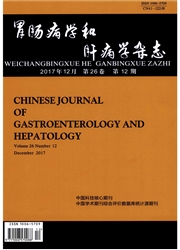

 中文摘要:
中文摘要:
目的探讨KAI1基因对MHCC97-H肝癌细胞生物力学的影响。方法采用微管吸吮技术研究我们前已转染人类KAI1全长正、反义结构基因的人肝癌MHCC97-H细胞粘弹性以及对FN的粘附力等生物力学参数。结果MHCC97-H肝癌细胞的粘弹性系数K1、K2、μ在转染KAI1正义基因后明显增加(P〈0.05),在转染KAI1反义基因后明显降低(P〈0.01),而转染空载体后则无明显变化(P〉0.1)。在FN裱衬表面,各组肝癌细胞的粘附力分别为MHCC97-H-S组685.4±113.6,MHCC97-H-AS组1124.6±123.5,MHCC97-H-pCI组849.0±126.3及MHCC97-H亲本细胞组824.7±134.1(单位为10-10N,细胞数为25)。与亲本细胞组比较,MHCC97-H细胞对FN的粘附力在转染KAI1正义基因后显著下降(P〈0.01),转染KAI1反义基因后显著增加(P〈0.01),而转染空载体后无明显变化(P〉0.1)。结论从细胞生物力学角度,KAI1基因可能增加肝癌细胞的粘弹性及降低细胞对细胞外基质FN的粘附力,从而抑制转移的初始步骤,进而抑制MHCC97-H肝癌细胞的侵袭和转移。
 英文摘要:
英文摘要:
Objective To explore the effect of metastasis-suppressor gene KAI1 on biomechanical properties of MHCC97-H hepatocellular carcinoma cells with high metastatic potential,so as to suspect the possible mechanism of effects of metastasis-suppressor gene KAI1 on invasion and metastasis of MHCC97-H cells.Methods The viscoelastic properties and the adhesion forces of MHCC97-H cells with high metastaticpotential transfected with sense or antisense KAI1 expression plasmid in our previous experiments were measured by means of micropipette aspiration technique.Results Compared with paternal MHCC97-H cells,the elastic coefficients K1,K2 and μ of the MHCC97-H cells were significantly higher after transfected with sense KAI1 expression plasmid (P〈0.05),they were lower after transfected with antisense KAI1 expression plasmid (P〈0.01),and there was no significant difference after transfected with its control vector pCI-neo without KAI1 gene(P〉0.1).On FN coated surfaces,the forces of the MHCC97-H cells were significantly higher after transfected with antisense KAI1 expression plasmid (P〈0.01),they were lower after transfected with sense KAI1 expression plasmid (P〈0.01),and there was no significant difference after transfected with its control vector pCI-neo without KAI1 gene (P〉0.1).Conclusion The metastasis-suppressor gene KAI1 may significantly affect the biomechanical properties of MHCC97-H hepatocellular carcinoma cells with high metastatic potential.It offers an important clue to study the mechanisms of invasion and metastasis of the malignant tumor.
 同期刊论文项目
同期刊论文项目
 同项目期刊论文
同项目期刊论文
 期刊信息
期刊信息
